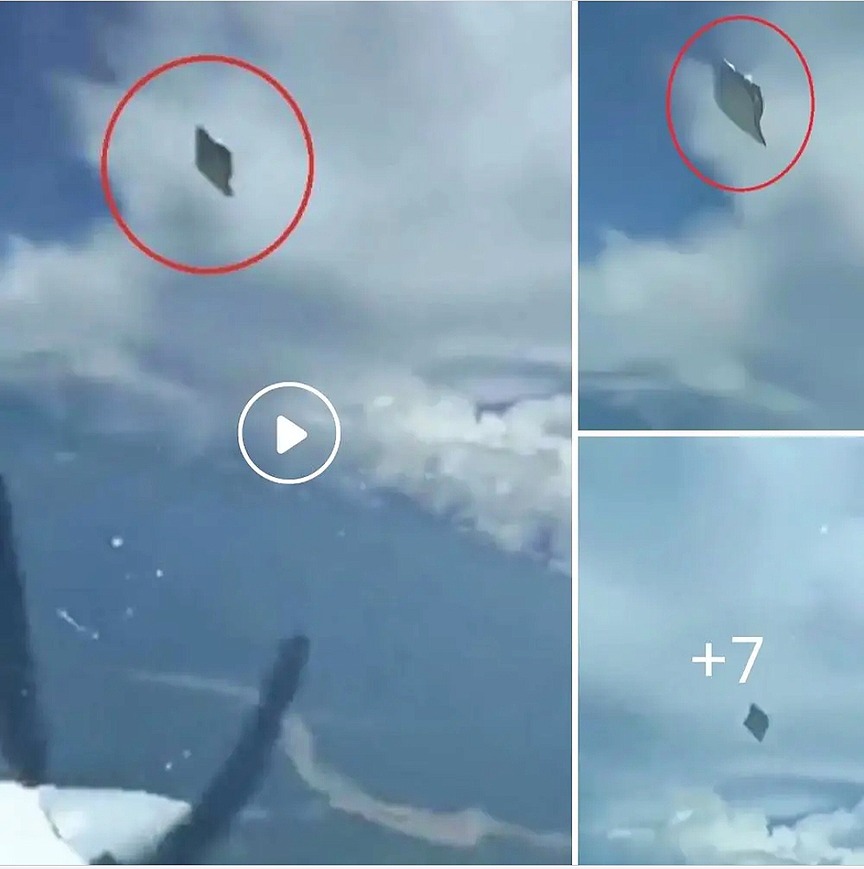In recent times, the topic gained renewed interest as technology advanced, providing more opportunities for people to capture unusual phenomena in the sky. Numerous reports from around the world have described mysterious lights, erratic movements, and unidentified flying craft that defy conventional explanations.
The skepticism surrounding UFO sightings often leads to questions about extraterrestrial life and government cover-ups. Conspiracy theories abound, suggesting that governments possess information about these unidentified objects but choose to keep it hidden from the public. Such speculation only deepens the mystery and adds an element of suspense to the phenomenon.
Scientists and astronomers, while acknowledging the possibility of unknown aerial phenomena, emphasize the need for rigorous investigation and evidence-based conclusions. In an era where digital manipulation is prevalent, distinguishing between genuine sightings and hoaxes becomes a challenging task.
The search for extraterrestrial intelligence (SETI) has been ongoing for years, using radio telescopes and other advanced technologies to detect potential signals from outer space. While no conclusive evidence has been found, the pursuit continues, fueled by the human desire to unravel the mysteries of the cosmos.
Public fascination with UFOs extends beyond scientific inquiry, permeating popular culture through books, movies, and television shows. The portrayal of extraterrestrial encounters ranges from thrilling to terrifying, shaping societal perceptions and influencing how individuals interpret reported sightings.
As the debate rages on, it is crucial to approach the topic with a balanced perspective. While some UFO sightings remain unexplained, attributing every aerial anomaly to extraterrestrial visitors may oversimplify the complex nature of our vast universe. Scientific scrutiny and open-minded exploration are essential to understanding the true nature of these enigmatic events.
The question of whether extraterrestrial life exists beyond Earth has captivated the human imagination for centuries. While there is currently no conclusive evidence of aliens, the vastness of the universe and the potential for habitable conditions on other celestial bodies make the existence of extraterrestrial life a tantalizing possibility.
One of the key arguments supporting the existence of aliens is the sheer enormity of the universe. With billions of galaxies, each containing billions of stars, and many of those stars hosting planets, the probability of Earth being the only celestial body harboring life seems statistically unlikely. The vastness of space offers numerous opportunities for the development of conditions conducive to life as we know it.
Additionally, the discovery of exoplanets within the habitable zone—the region around a star where conditions may allow for liquid water—has fueled speculation about the potential for extraterrestrial life. Advances in technology, such as the Kepler Space Telescope, have enabled astronomers to identify thousands of exoplanets, some of which share similar characteristics with Earth. While this does not provide direct evidence of aliens, it heightens the anticipation of finding potentially habitable environments beyond our solar system.
The search for extraterrestrial intelligence (SETI) represents another avenue of exploration. Radio telescopes have been scanning the cosmos for signals that may indicate communication from advanced civilizations. Though SETI has not yielded any definitive evidence, the quest continues, driven by the belief that the vastness of space holds the possibility of encountering intelligent life capable of technological communication.
Furthermore, the discovery of extremophiles—organisms that thrive in extreme conditions on Earth—has expanded our understanding of where life could exist. If life can endure extreme environments on our own planet, it raises the possibility that similar resilient life forms could exist in the harsh conditions of other celestial bodies, such as the subsurface oceans of moons or the atmospheres of gas giants.
Despite these intriguing possibilities, it is essential to acknowledge the absence of concrete evidence supporting the existence of aliens. The search for extraterrestrial life is ongoing, with missions like the Mars rovers and the study of the moons of Jupiter and Saturn providing valuable data. Until definitive proof emerges, the existence of aliens remains a hypothesis rather than an established scientific fact.
while the existence of aliens is an exciting prospect, it remains speculative at this point in our scientific understanding. The vastness of the universe, the identification of potentially habitable exoplanets, and the exploration of extreme environments on Earth all contribute to the intrigue surrounding the possibility of extraterrestrial life. As our technology advances and our exploration of the cosmos continues, the question of whether aliens exist remains one of the most captivating mysteries of our time.
the discovery of a UFO in the sky sparks curiosity, fear, and wonder. Whether a result of natural phenomena, human technology, or extraterrestrial origin, these sightings contribute to the ongoing exploration of the unknown. As technology continues to advance, the possibility of unraveling the mysteries behind these unidentified flying objects remains an exciting prospect for the future of human discovery.




